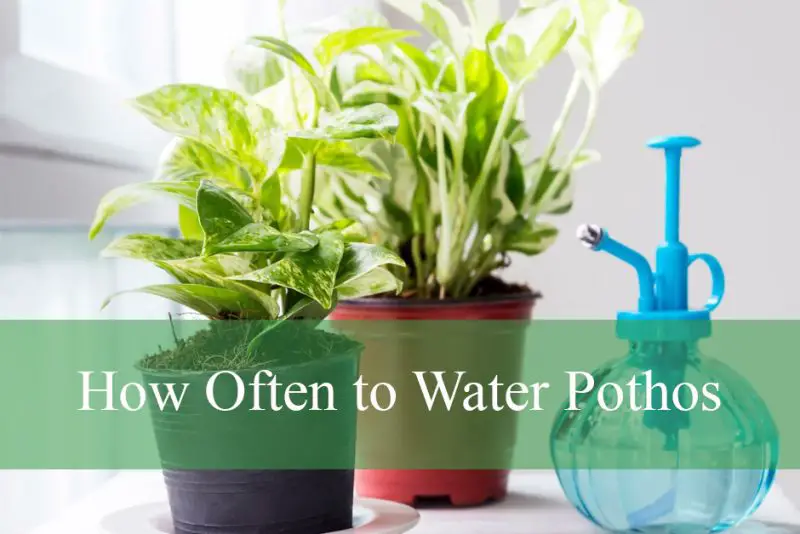Pothos plants have gained immense popularity as easy-to-care-for houseplants. Their attractive trailing vines and vibrant heart-shaped leaves add a touch of greenery to any space. Because of their resilience, pothos are favored by both plant beginners and seasoned gardeners alike.
A crucial aspect of keeping pothos healthy and flourishing is knowing the right watering routine. How often you water your pothos plays a significant role in its overall growth and vitality. Getting this balance right helps prevent common problems like root rot caused by too much water or wilting from too little.
In this guide, we will dive into the watering needs of pothos grown indoors and outdoors. You’ll learn practical tips and advice to ensure your pothos thrives in any environment, maintaining lush foliage and steady growth.
Understanding Pothos Water Needs

Before diving into specific watering schedules, it’s essential to understand the basic water requirements of pothos. Native to tropical forests, pothos (Epipremnum aureum) thrives in warm, humid environments with filtered sunlight. The soil around the roots should stay moist but never soggy. Pothos can tolerate some neglect, which is why it’s popular among those new to plant care. However, consistent and proper watering will ensure optimal growth and vibrant foliage.
Pothos has thick, waxy leaves that help retain moisture, allowing the plant to endure short dry spells. Yet, it is sensitive to prolonged dryness, which results in crispy leaf edges and stunted growth. Conversely, excessive water causes the roots to suffocate, leading to fungal diseases and root rot. Striking the right balance is key.
How Often to Water Pothos Indoors
Indoor environments vary widely depending on factors like humidity, temperature, pot type, and lighting conditions. These elements significantly impact how often you need to water your pothos plant.
Factors Influencing Indoor Watering Frequency
The indoor air tends to be drier, especially in homes with air conditioning or heating, which can increase evaporation rates from soil and leaves. On the other hand, low light conditions slow down pothos growth and reduce water uptake, meaning the plant requires less frequent watering.
The size and material of the pot also play a role. Clay or terracotta pots are porous and allow moisture to evaporate faster than plastic or glazed pots. Larger pots hold more soil and retain moisture longer, while smaller pots dry out quickly.
Signs Your Indoor Pothos Needs Water
Knowing when to water your pothos is easier when you observe the plant and soil carefully. A reliable method is to check the top inch or two of the soil. If it feels dry to the touch, it’s time to water. The leaves may also give you clues; drooping, dullness, or yellowing could signal dehydration.
It’s important to avoid watering on a fixed schedule indoors, as conditions change with seasons and household environments. For instance, pothos may need watering once a week during warm months but only every two to three weeks in cooler seasons.
Recommended Indoor Watering Routine
Generally, watering your indoor pothos every 7 to 10 days is a good starting point. Adjust based on the plant’s response and the moisture level of the soil. When watering, soak the soil thoroughly until water drains out of the pot’s bottom. This ensures the entire root ball receives moisture, encouraging deep root growth.
Avoid letting your pothos sit in standing water, as it promotes root rot. Use pots with drainage holes and empty saucers regularly. During winter, reduce watering frequency because pothos enter a semi-dormant state and require less moisture.
Effects of Overwatering Indoors
Overwatering is one of the most common mistakes with indoor pothos care. Symptoms include yellowing leaves, wilting despite wet soil, and a musty smell from the soil surface. If left untreated, the roots will rot, and the plant may eventually die.
To save an overwatered pothos, stop watering immediately and allow the soil to dry out. Repotting in fresh, well-draining soil might be necessary to remove damaged roots. Ensuring proper drainage and watering only when the topsoil is dry will prevent this problem.
How Often to Water Pothos Outdoors
When grown outdoors, pothos plants encounter more natural conditions such as rainfall, sunlight intensity, and temperature fluctuations. These factors change watering needs significantly compared to indoor plants.
Outdoor Environment Impact on Watering
Pothos planted outside often receive some amount of natural water from rain, which reduces the need for manual watering. However, exposure to full sun, wind, and heat can dry out the soil faster than indoors.
In tropical or subtropical climates, pothos tends to grow vigorously and demands more frequent watering. Meanwhile, in temperate regions, the watering schedule depends heavily on the season and local weather.
Outdoor pothos grown in the ground may require less frequent watering than those planted in containers because the surrounding soil retains moisture better and has more root space.
Best Watering Practices for Outdoor Pothos
For outdoor pothos in containers, watering every 3 to 7 days during warm months is typical. Check the soil moisture regularly and water deeply, allowing excess to drain freely. If the soil remains soggy for days, cut back on watering.
When pothos is planted in garden beds or shaded areas, supplemental watering may be needed only during dry spells. Mulching around the plant can help retain soil moisture and regulate temperature.
Seasonal Adjustments for Outdoor Watering
During the hot summer, pothos outdoors may require daily watering, especially if they are in pots that dry quickly. In cooler months or rainy seasons, watering can be reduced or paused depending on rainfall.
Be mindful of overwatering during rainy seasons, as soggy soil outdoors also leads to root damage and fungal problems. Ensuring good drainage and proper soil composition outdoors is just as important as indoors.
Comparing Indoor and Outdoor Watering Needs of Pothos
The watering frequency of pothos indoors versus outdoors differs mainly due to environmental factors. Indoors, the plant experiences stable temperatures, limited airflow, and artificial humidity levels. Outdoors, pothos is subject to more variability.
Indoor pothos typically needs less frequent watering because it grows slower in lower light and controlled environments. Outdoors, pothos often grows faster and requires more water to support healthy foliage and new growth.
Furthermore, outdoor pothos benefits from rainwater, which is often purer than tap water used indoors. Rainwater can improve soil quality and reduce the risk of salt buildup that sometimes occurs indoors.
However, outdoor pothos are also more vulnerable to drying out from sun and wind exposure, which indoor plants avoid. This means monitoring soil moisture closely and adjusting watering accordingly is crucial in both settings.
Tips for Proper Watering of Pothos
Regardless of whether your pothos is indoors or outdoors, watering should always be done thoughtfully. The goal is to maintain moist soil without causing waterlogging.
A good practice is to water in the morning to allow excess moisture to evaporate during the day, reducing fungal risks. Using room temperature water helps prevent shocking the roots.
If you notice signs of underwatering, such as drooping leaves or brown edges, increase the watering frequency slightly. Conversely, if leaves turn yellow or the soil is consistently wet, scale back watering.
Ensuring your pothos is potted in well-draining soil mixed with materials like perlite or peat moss helps maintain optimal moisture balance. The right pot size and material also play important roles in water retention and evaporation.
Signs of Water Stress in Pothos and How to Respond
Pothos plants communicate their water needs through visible changes. When underwatered, leaves may curl, droop, or develop crispy brown edges. If you observe this, it’s best to water thoroughly and monitor for improvement.
Overwatering symptoms include yellowing leaves, soft or mushy stems, and a foul smell from the soil. If overwatering occurs, reduce watering immediately and consider repotting in fresh soil if root rot is suspected.
Regularly inspecting your pothos for such signs allows you to adjust watering schedules before severe damage occurs.
How Climate and Season Affect Pothos Watering
Climate plays a significant role in determining how often to water pothos. In humid regions, the soil retains moisture longer, so watering intervals can be extended. Conversely, in dry or arid climates, pothos dries out faster, necessitating more frequent watering.
Seasonal changes affect pothos growth rates and water needs as well. During spring and summer, when growth is active, pothos consumes more water. In fall and winter, its metabolism slows, and watering should be reduced accordingly.
Indoor pothos also experiences seasonal shifts, especially in homes with heating systems that dry the air in winter. Increasing humidity with a humidifier or pebble trays can help reduce water loss.
Frequently Asked Questions About How Often to Water Pothos
How do I know when my pothos needs watering?
The best way to tell if your pothos needs water is to check the soil moisture. Stick your finger about an inch or two into the soil; if it feels dry at that depth, it’s time to water. Additionally, drooping or dull leaves can indicate that the plant is thirsty.
Can I overwater my pothos? What happens if I do?
Yes, overwatering is a common issue with pothos. When the soil remains soggy for too long, the roots can suffocate and develop root rot. Signs of overwatering include yellowing leaves, mushy stems, and a musty smell from the soil. To fix this, reduce watering frequency and ensure proper drainage.
How often should I water my pothos indoors?
Typically, watering indoor pothos every 7 to 10 days works well, but it depends on your home’s humidity, temperature, and light conditions. Always check the soil moisture before watering rather than following a strict schedule.
Does watering frequency change with the seasons?
Yes, pothos generally require more frequent watering during the growing seasons of spring and summer. In fall and winter, their growth slows down, so watering should be reduced accordingly to prevent overwatering.
How often should I water my pothos if it’s grown outdoors?
Outdoor pothos usually need watering every 3 to 7 days during warm months, depending on rainfall and exposure to sun and wind. In rainy seasons or cooler weather, watering can be less frequent. Always monitor soil moisture closely.
What type of water is best for pothos plants?
Pothos prefer room temperature water that is free from harsh chemicals. If possible, use filtered or rainwater, as tap water with high chlorine or fluoride levels can sometimes cause leaf tip browning.
Can watering time of day affect pothos health?
Yes, watering in the morning is ideal because it allows excess moisture on the leaves and soil surface to evaporate during the day, reducing the risk of fungal diseases and root problems.
Conclusion: Finding the Perfect Watering Balance for Your Pothos
Determining how often to water pothos indoors and outdoors requires attention to environmental conditions, plant behavior, and seasonal factors. While indoor pothos generally need watering every 7 to 10 days, and outdoor plants may require watering every 3 to 7 days during warm months, these are guidelines rather than fixed rules.
Observing your plant and soil moisture is the best way to ensure healthy growth. Providing well-draining soil, proper pot selection, and watering only when needed will help your pothos thrive beautifully. By adapting your watering routine to indoor and outdoor settings, you can enjoy lush green vines and long-lasting vitality from this popular and easy-to-care-for houseplant.






